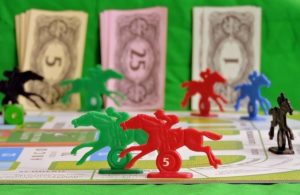Which horse was Paul Nicholls’ first Cheltenham Festival winner?
 Paul Nicholls has come a long way since he arrived at Manor Farm Stables in Ditcheat, Somerset with just eight horses. With the possible exception of his landlord, Paul Barber, no-one could really have predicted his rise to the top of his profession, where he has remained for over two decades. Nicholls did not become Champion National Hunt Trainer for the first time until 2005/06, but has done so a further eleven times since and remains one of just three men – the other two being Martin Pipe, who retired in 2006, and Nicky Henderson – to have won the trainers’ title since the turn of the century.
Paul Nicholls has come a long way since he arrived at Manor Farm Stables in Ditcheat, Somerset with just eight horses. With the possible exception of his landlord, Paul Barber, no-one could really have predicted his rise to the top of his profession, where he has remained for over two decades. Nicholls did not become Champion National Hunt Trainer for the first time until 2005/06, but has done so a further eleven times since and remains one of just three men – the other two being Martin Pipe, who retired in 2006, and Nicky Henderson – to have won the trainers’ title since the turn of the century.
As far as the Cheltenham Festival is concerned, Nicholls has saddled 46 winners and until 2021, when he drew a blank, had saddled at least one winner every year since 2002. He has won the Leading Trainer Award at the Cheltenham Festival six times, including on 1999, the year in which he saddled his first winner at the March showpiece. His first winner was, in fact, Flagship Uberalles in the Arkle Challenge Trophy on the opening day, but he also saddled Call Equiname to win the Queen Mother Champion Chase and See More Business to win the Cheltenham Gold Cup later in the week.
 Traditionally, the Flat jockeys’ championship was decided on the number of winners ridden between Lincoln Day at Doncaster, in late March or early April, and November Handicap Day at the same venue, in early November. Those dates corresponded to the start and finish of the well-established Flat racing season on turf. However, since the advent of Flat racing on synthetic, or ‘all-weather’, surfaces in 1989, the start and finish of the turf season have become less meaningful. Indeed, the continued expansion of the all-weather programme has meant that Flat racing takes place on all bar three days of the year.
Traditionally, the Flat jockeys’ championship was decided on the number of winners ridden between Lincoln Day at Doncaster, in late March or early April, and November Handicap Day at the same venue, in early November. Those dates corresponded to the start and finish of the well-established Flat racing season on turf. However, since the advent of Flat racing on synthetic, or ‘all-weather’, surfaces in 1989, the start and finish of the turf season have become less meaningful. Indeed, the continued expansion of the all-weather programme has meant that Flat racing takes place on all bar three days of the year.